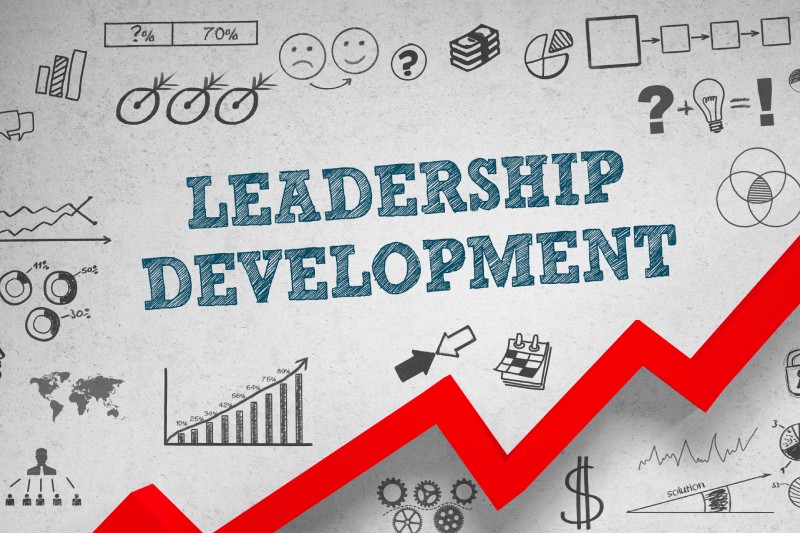Leadership development has evolved as a crucial component for organizational success in today’s fast-paced commercial environment. Organizations worldwide are realizing how vital it is to develop a solid leadership team to remain competitive. The importance of leadership development, critical competencies for success, and how Corporate Class Inc. supports their clients on this path are all covered in this article.
Understanding the Importance of Leadership Development
It is impossible to exaggerate the significance of leadership development in today’s quickly changing business environment. Building a strong leadership team is becoming strategically crucial as firms embrace continuous change and handle hitherto unheard-of problems. Effective leadership development fosters creativity, adaptability, and resilience within a company, accelerating sustained success.
By investing in leadership development, companies can ensure that their leaders constantly improve and stay up-to-date with changing business needs. An effective leadership team is better suited to handle the challenges of strategic planning, problem-solving, and decision-making. Beyond personal development, leadership development initiatives support the organization’s culture of ongoing improvement by identifying and developing new talent.
Moreover, when team members see that an organization is dedicated to their professional development, leadership development benefits employee engagement. Engaged employees positively affect productivity and turnover, which helps the entire business. Leadership development becomes essential for organizational agility in quickly evolving business environments. It guarantees that leaders can skillfully lead their teams through adversity and uncertainty. Any forward-thinking organization’s resilience and long-term success are investments made through strategic leadership development.
Developing Essential Leadership Skills for Success
Every aspect of leadership, from communication to emotional intelligence, must be developed to be effective. The leadership training and coaching offered by Corporate Class Inc. fully address these aspects and provide practical solutions and insights.
Through the online leadership training, leaders can:
- Master body language and initial impressions.
- Be confident and concise in your communication.
- Create a distinctive personal brand.
- Lead with impact and purpose.
- Navigate office politics successfully.
Individuals can strengthen their leadership skills and increase their influence within their organizations by taking part in these programs.
Corporate Class Inc. has several programs available that will help executives to:
- Strengthen your charisma, self-assurance, and effect as a leader with our Leadership Presence Online Program.
- Enhance performance and mental wellness with strategies supported by neuroscience with our self-paced Mental Fitness Webinar.
- Based on Brené Brown’s research, the program Dare to LeadTM gives you the tools to develop into a braver, more courageous leader.
- Develop your online authority and brand to stand out in a crowded field with social selling.
- Women’s Leadership Development: Enable women leaders to assume leadership roles with sincerity and self-assurance.
Corporate Class Inc. is commited to improving corporate performance by elevating talent, assisting with succession planning, boosting employee engagement, and fortifying connections.
Investing in Effective Leadership Development Programs
A program for successful leadership development is a wise investment in your company’s future prosperity. Let’s go into more detail about the importance of these programs and how they help the people and businesses they serve.
Being a leader involves more than just holding positions of power; it also entails promoting creativity, bringing about positive change, and motivating a team. Successful leaders foster a culture of expansion and flexibility. The following are some arguments in favor of investing in leadership development:
1. Developing Leadership Capabilities
A skill like leadership can be developed and improved. Programs for leadership development give participants the skills and information they need to succeed in leadership positions. Effective communication, strategic decision-making, and overcoming obstacles are skills they acquire.
2. Recognizing and Developing Talent
These initiatives support businesses in identifying and developing new internal leaders. Recognizing potential and offering chances for advancement can be effective motivators for staff members. Additionally, it guarantees a supply of qualified leaders for the future.
3. Increasing Staff Engagement
People in more than just senior positions need to strengthen their leadership skills. Employee engagement and commitment are higher when they perceive that their company cares about their professional development. Increased productivity and lower turnover may result from this.
4. Adjusting to Changing Business Environments
The business world is ever-changing. Leaders who can adjust to change and guide their people through it are compelling. Developing leadership skills gives people the adaptability and the resiliency they need to succeed in changing environments.
Leading Virtual Teams: Obstacles and Best Practices
Leaders must adapt to the difficulties and best practices of managing virtual teams due to the considerable move toward remote work in the global workplace. Some of the challenges include:
- Communication Barriers: Miscommunication is simply possible when there isn’t face-to-face interaction. Leaders must promote the ability to communicate clearly and openly.
- Community Building: Building community and cooperation among distant team members can be difficult. Leaders need strategies to build a solid team culture.
- Monitoring Performance: Evaluating the output and performance of distant team members can be difficult. Leaders must implement performance measurements and regular check-ins.
- Work-Life Balance: Working remotely can lead to burnout by causing a blending of work and personal life. Leaders should establish boundaries and promote work-life balance.
- Time Zone Differences: Synchronous cooperation is challenging because virtual teams sometimes include members from various time zones. Leaders need to discover strategies to take these disparities into account.
Challenges and Best Practices in Leading Virtual Teams
- Improve Communication: Establish explicit communication protocols, use collaboration technologies, and promote honest and open communication to achieve effective communication.
- Develop Trust: The cornerstone of any successful collaboration is trust. Team members should be trusted by their leaders, who should encourage it.
- Clear Roles: Create a clear definition of roles, duties, and objectives. Ensure that team members are aware of their responsibilities.
- Regular Check-Ins: To keep everyone on the same page and informed, schedule regular one-on-one and team meetings.
- Embrace Technology: Use technology for collaboration, communication, and project management. Make sure that everyone on the team feels at ease using the equipment.
- Virtual Team Building: Encourage virtual team-building exercises to fortify team relationships, battle isolation, and promote social interaction.
Managing virtual teams presents a unique set of difficulties. Still, with the appropriate approaches and best practices, managers can successfully overcome these difficulties and encourage a productive and motivated virtual workforce.

Driving Success Through Leadership in Times of Crisis
The success of an organization depends on its leadership in the fast-paced, constantly evolving world of business. Effective leadership is the ship’s rudder, especially in stormy crises. The solutions that Corporate Class offers, will enable you to lead with success through trying circumstances.
The Essential Function of Leadership in Crisis
Economic downturns, worldwide pandemics, or unforeseen difficulties can all cause times of crisis, which can rock even the most steadfast businesses to their foundations. To sail the ship through these choppy waters, leadership is crucial. Why is leadership so important in times of crisis?
1. Crisis Navigation: Capable leaders can navigate through uncertainty, making wise judgments and reducing the crisis’ impact.
2. Building Confidence: Leaders who speak effectively and authoritatively can build trust and confidence among their followers, stakeholders, and clients.
3. Team Resilience: Teams that are led well are more cohesive and resilient, which helps them weather the storm as a unit.
4. Adaptability: Leaders who have completed extensive leadership development programs can better adjust to changing situations quickly.
5. Strategic Thinking: Leadership training helps people acquire the strategic thinking abilities necessary to create successful crisis management strategies.
Business Class Inc. Your Co-Leader in Emergencies
Corporate Class Inc. is aware of the particular difficulties that executives encounter in times of crisis. Our leadership development programs are created to equip leaders with the abilities, frame of mind, and resiliency required to succeed under pressure. Here’s how we can support your success in crises through leadership:
1. Crisis Communication: Our workshops are focused on improving your communication abilities so you can clearly and compassionately explain complex information.
2. Decision-Making Under Pressure: We offer tools and strategies to help you make better decisions, especially under stressful circumstances.
3. Team Cohesion: Our leadership programs heavily emphasize the value of team cohesion and offer techniques for creating and maintaining dependable, strong teams.
4. Resilience Building: We assist you in enhancing your resilience so you can overcome obstacles and take charge with assurance.
5. Innovation Amid Chaos: We promote creative problem-solving in our programs
You’ll endure difficult times, but with Corporate Class Inc. by your side; you can thrive in them by growing to be a stronger and more capable leader.
Inspiring Change through Transformational Leadership
Organizations must constantly change to be competitive and relevant in today’s fast-paced commercial environment. This calls for transformative leadership in addition to effective leadership. Let’s explore how Corporate Class equips you to lead with transformational influence.
Transformational Leadership’s Power
Transformational leadership goes above and beyond typical leadership by inspiring and encouraging teams to produce outstanding results. It involves promoting an innovative, adaptable, and continual improvement culture. Why transformative leadership is so potent is as follows:
1. Visionary Leadership: Transformational leaders inspire and direct their employees toward a better future with a compelling vision.
2. Motivation: They can inspire their people to go above and beyond expectations and effect positive change.
3. Empowerment: Transformational leaders instill a sense of responsibility and dedication in their team members by encouraging them to take ownership of their work.
4. Innovation: They foster creativity and innovation, which helps firms advance in a world that is changing quickly.
5. Adaptability: Transformational leaders are flexible and open to change, making them suitable for leading in today’s fast-paced environment.
The Function of Corporate Class Inc. in Transformative Leadership
Transformational leaders at Corporate Class Inc. are created, not born. Our programs for developing leaders are intended to support and amplify transformational leaders. Here is how we assist you in bringing about change and transforming your organization:
1. Emotional Intelligence: We emphasize emotional intelligence in our training so that you can recognize and effectively control emotions in both yourself and your teams.
2. Effective Communication: We teach you the communication techniques required to share your vision and motivate others to embark on your journey.
3. Personal Branding: With the help of our programs, you can create a distinctive personal brand that supports your mission and increases your reputation and influence.
4. Adaptability: We encourage adaptability, a vital quality for leaders who successfully manage change and catalyze development.
5. Inclusivity: Our programs strongly emphasize the value of fostering inclusive workplaces that welcome many viewpoints and promote creativity.
With the help of the leadership development programs offered by Corporate Class Inc., you’ll be prepared to lead with vision, encourage change, and promote change within your firm. Our all-encompassing approach to leadership development guarantees that you acquire the attitude and emotional intelligence essential to succeed as a transformative leader with the requisite skills.
Leadership continues to be the key to success in the dynamic world of business. Effective leadership is essential to achieving your objectives, whether you’re guiding your firm through a crisis or igniting radical change. To help you succeed in leadership during difficult times and to inspire change through transformational leadership in a constantly changing world, Corporate Class Inc. is ready to support you along the way. Take advantage of Corporate Class Inc.’s leadership development programs to realize your full leadership potential.













